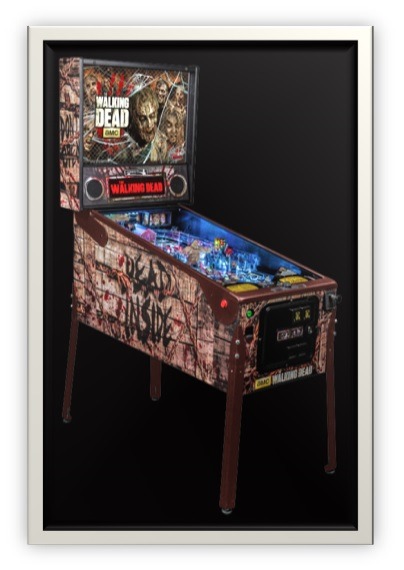As has been pointed out by analysts like Reed Bunzel and Radio Ink, The Radio Show last week contained mixed messages about the role that digital plays in broadcast radio’s journey.
Keynoter Bob Hoffman criticized the hype of digital, claiming that online advertising is largely ineffective. On the other end of the spectrum, Bunzel noted that Erica Farber underscored that digital is radio’s best path for growth in a flat business environment. He also pointed out that while Univision’s Jose Valle noted that digital streaming is a huge revenue line for his company, Emmis’ Jeff Smulyan declared that he’s never made a dime from his streams.
So the radio industry would still seem to be at a crossroads with the digital potential and the digital reality.
 Not so for the pinball business.
Not so for the pinball business.
While the technology revolution has tested one industry after another, from travel agents to cameras to retail shopping to radio, pinball is digitally on board, changing and adapting to new consumer tastes and the ways in which people kill time.
The Wall Street Journal reports that modern technology is being integrated with old school pinball to create a more fast-moving competitive experience, encouraging more consumers to “play that silver ball.”
In the fast moving world of online and computer video games, the pinball industry has had to pivot in order to stay competitive and vital.
It turns out that the International Flipper Pinball Association now sponsors 1,600 tournaments a year, featuring 27,000 ranked players as international players compete for dominance.
Part of the transition for pinball revolved around the look and feel of the game. Manufacturers have adjusted the tilt to create a faster game, along with LED displays, more sophisticated soundtracks, and other features that are reminiscent of video games.
Stern Pinball appears to be leading much of the charge, focusing on branded pinball machines that reflect modern pop culture tastes. A new Walking Dead pinball machine featuring all kinds of zombies is up next, in a series that now features AC/DC, Metallica, and The Avengers.
Technology, updated effects, online rankings, a better fan experience, and partnerships with other popular names and media attractions are the fuel that is helping to reboot the pinball business.
While the last decade has spawned many new ways for consumers to spend their leisure time, legacy brands and industries have incredible opportunities to update, energize, and connect with new up and coming fans who might just be tired of playing Madden, Myst, or The Sims on laptops, tablets, and controllers.
The pinball world is yet another example of recognizing change, shaking up the business model, integrating new technology, taking some risks, and building a new fan base.
So, remember to keep those wrists supple.
Thanks to WRIF’s Screamin’ Scott Randall for bringing me up to speed about what’s going on with pinball.
- What To Do If Your Radio Station Goes Through A Midlife Crisis - April 25, 2025
- A 2020 Lesson?It Could All Be Gone In A Flash - April 24, 2025
- How AI Can Give Radio Personalities More…PERSONALITY - April 23, 2025




Fred, STERN pinball rocks! They make them here in the Chicago area and Gary Stern is basically the savior of the category since Bally/Midway/Williams exited in the early 2000s. I own two of their 90s era machines but the new ones are fantastic and a great example of how merging new technology with old (digital and analog?) can work if the content is on target. Thanks for sharing this.
Thanks for those insights, Jack. Always great to get more perspective. Sometimes it takes one motivated innovator to create a seismic change. Appreciate you sharing the story.
I wonder how the pinball industry would have reacted if going digital would have incurred a 70 % of revenue royalty.
Transitioning an industry or a category is always fraught with peril, barriers, and naysayers. Whether radio, digital film. or pinball, the key is to look past the speed bumps and the disbelievers and find a way. Thanks for the thought, Bob.